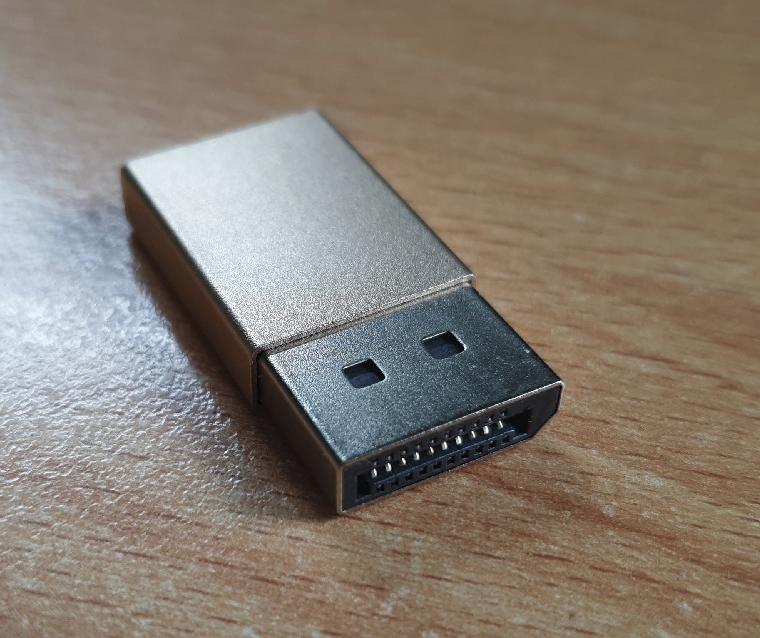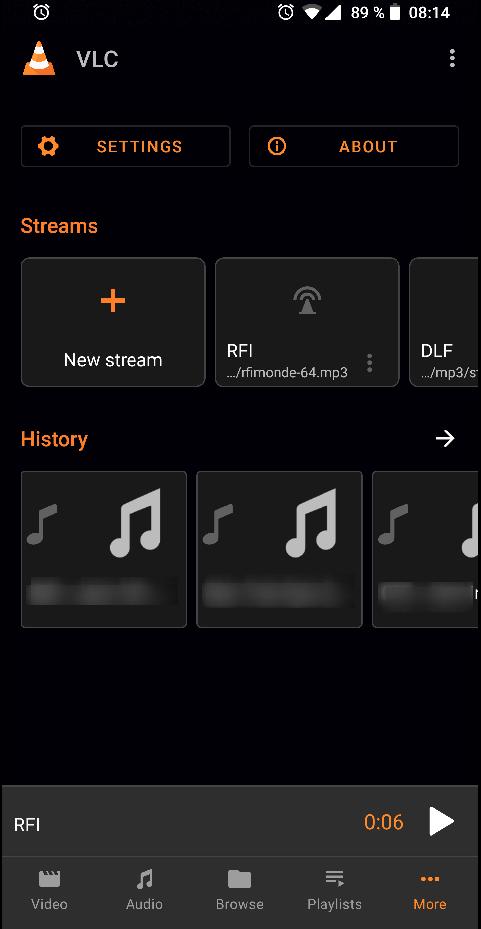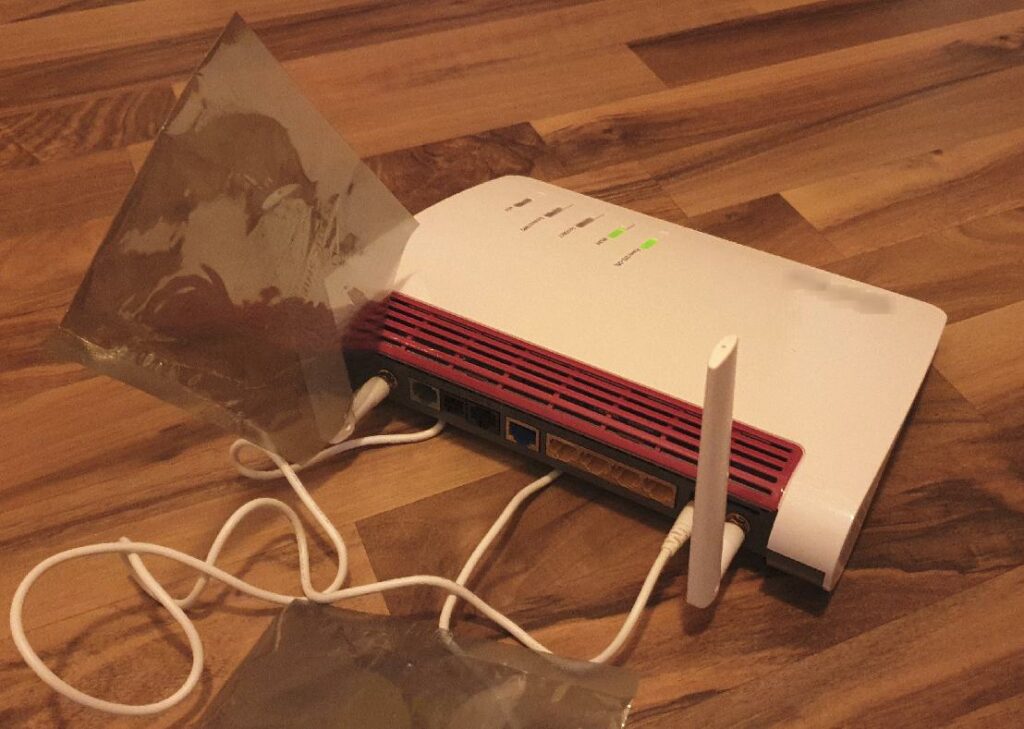Earlier this year, I discovered how to run a graphical desktop in a virtual machine in the cloud. I promptly put this to good use and ran a couple of online hands-on workshops on various topics in recent months. In combination with Guacamole, participants don’t even need to install a remote desktop viewer, but can use the remote desktop right in the web browser. My latest improvement: Run several desktops on a single Virtual Machine.
Continue reading Several Desktops On A Single VM In The CloudMy First Use Of 5G While Roaming
And while I’m already writing about recent personal roaming firsts, I should also mention that I saw my first personal 5G use while roaming in Austria in May 2021.
Continue reading My First Use Of 5G While RoamingA Dummy Display Dongle for My Headless Workstation

Since back in December, I have a ‘Headless’ HP Z440 workstation under my desk with lots of RAM, storage and an Nvidia graphics card to run virtual machines and compute intensive stuff there instead of on my notebook. This works very well in practice and I use X over SSH a lot with virtual machines on the Workstation. There is one application, however, that doesn’t work very well this way: The Virtualbox management GUI. For some reason, the window doesn’t render correctly, and while it is usable, it’s a pain. One way to fix the problem would be to run the Virtualbox GUI on the display of the Z440 and then use VNC to access the screen. However, since I use the Z440 without a screen attached, this does not work, as no real display buffer is created during startup if no screen is attached. A few days ago I came across a “Display Port Dummy” adapter, and I immediately knew that this would fix my problem.
Continue reading A Dummy Display Dongle for My Headless WorkstationAndy Weir’s New Book: ‘Project Hail Mary’
If a book is good and the story is engaging, I tend to read it over the course of a week or two. But every now and then there is a superb book that I just can’t put down, which then has a serious impact on my work/live balance and my day/night rhythm. Andy Weir’s latest book ‘Project Hail Mary’ definitely falls into the second category, and I was glad I stumbled over it while I was on vacation.
Continue reading Andy Weir’s New Book: ‘Project Hail Mary’VoLTE Roaming in the Wild
Due to the ongoing pandemic, it’s been a while since I last traveled abroad and had some time to have a look how roaming has evolved. But things are slowly getting better and I recently had the opportunity to go on a quick trip to Austria. And I’ve been very positively surprised that my favorite home network operator and my favorite roaming operator in Austria have switched-on VoLTE Roaming in the meantime!
Continue reading VoLTE Roaming in the WildRadio Streaming on the Road

Once upon a time, cassettes, CDs and then memory sticks were ‘ the thing’ in the car apart from the good old (broadcast) radio. On longer trips, the downside of broadcast radio always is that sooner or later, you leave the coverage area of a station. In the age of the mobile Internet, that’s no longer a problem: Simply stream your favorite radio stations from the other end of the world over the Internet on your mobile device while driving, and pipe it via Bluetooth to the car’s entertainment system. So how good does that work in practice?
Continue reading Radio Streaming on the RoadUpgrading to BBB v2.3 and Ubuntu 18.04
I’ve been running a BBB server for well over a year now and recently it was time for a somewhat bigger update that was a bit out of the ordinary. For some reason or other, BBB v2.2 could only run on Ubuntu 16.04, which was already hopelessly outdated when I first installed the server last year. At the time, first efforts were done by the developers to base the next major version of BBB on Ubuntu 18.04. A bit of an odd decision from my point of view, as Ubuntu 20.04 was just around the corner and the current stable BBB release that requires the new OS version was only released a year later in May 2021. As the developers recommended not to update the OS and BBB, but rather start with a clean slate and install everything from scratch, I decided to do just that and was surprised that the approach is relatively painless, and can be done with a few commands. The only quirk I encountered was during the re-import of the user database on the new server that required some thinking.
Continue reading Upgrading to BBB v2.3 and Ubuntu 18.04Antenna Games & Anti-Static Bags

When working on radio related things in a lab, there are usually shielded boxes with antenna connectors and attenuators, so it’s easy to simulate bad RF conditions. That’s quite useful when testing how devices behave under such conditions. Recently, I wanted to see how a router with an LTE modem behaves when RF is bad from home, so I had to come up with a different approach: Anti-static bags.
Continue reading Antenna Games & Anti-Static BagsMy ffmpeg Cheat Sheet for Video Transcoding
One of the reasons I bought a used Z440 workstation with a 6 core Xeon CPU and an Nvidia graphics card back in December was to offload and speedup occasional video transcoding tasks. As I wrote at the time, I could get a speed-up of up to 8x over my X250 notebook. Since then I have found further parameter improvements for ffmpeg and in some scenarios, my speed-up is now over 30x compared to running the same task on my notebook.
Continue reading My ffmpeg Cheat Sheet for Video TranscodingWondershaper, SSH and the TOS field
In the previous post, I’ve been looking at Wondershaper, a great script that uses the Traffic Control (tc) command to counter buffer bloat situations. The main mechanism to do that is to set the maximum transmission and reception rate of an interface slightly below the available line rate, and thus prevent large transmission buffers to fill up and create unacceptable delay. But Wondershaper does a lot more, such as preferring packets of interactive SSH session over other data packets. When I had a look at how this is done, I was quite surprised that the packets were not preferred based on their TCP port number.
Continue reading Wondershaper, SSH and the TOS field